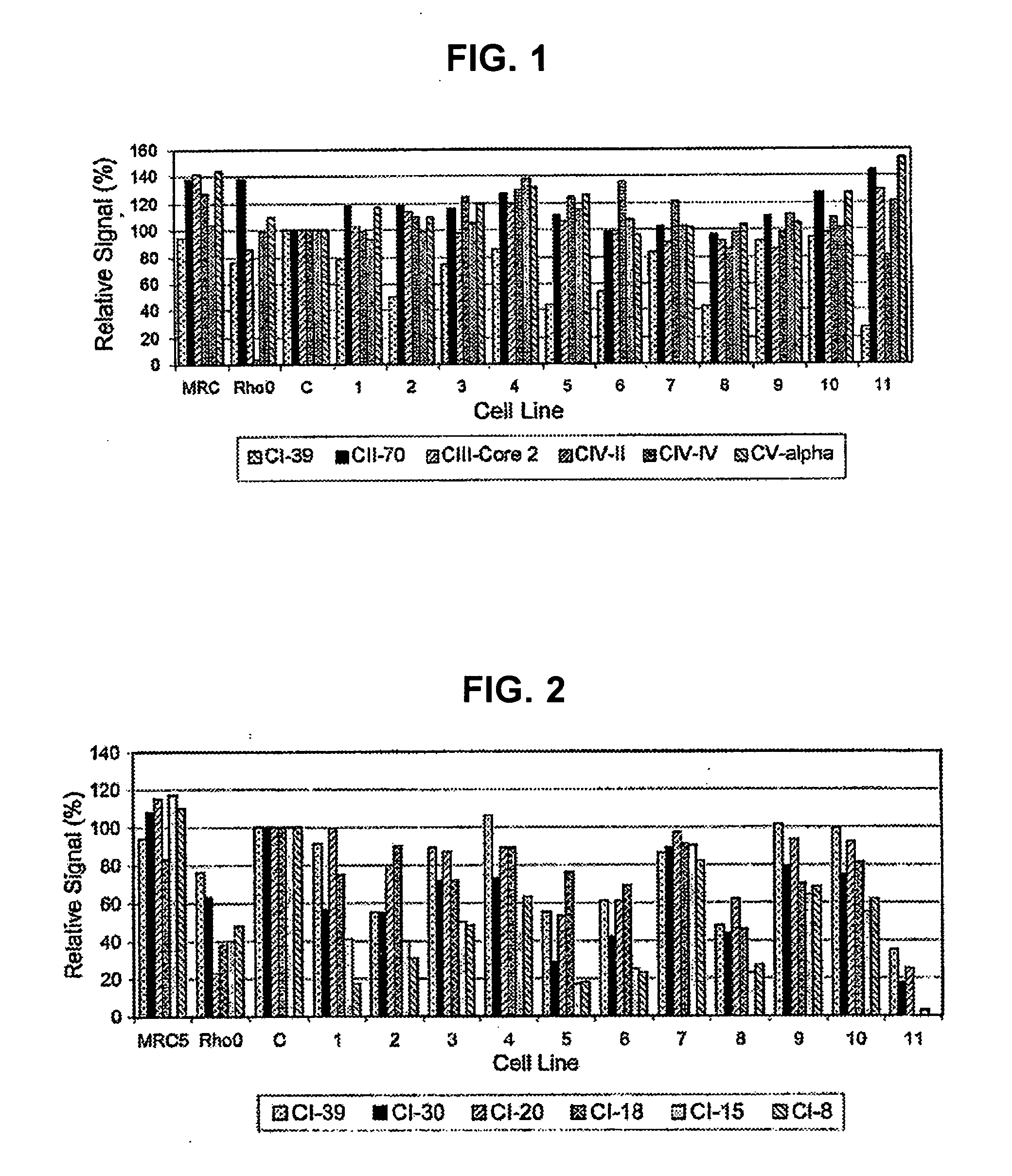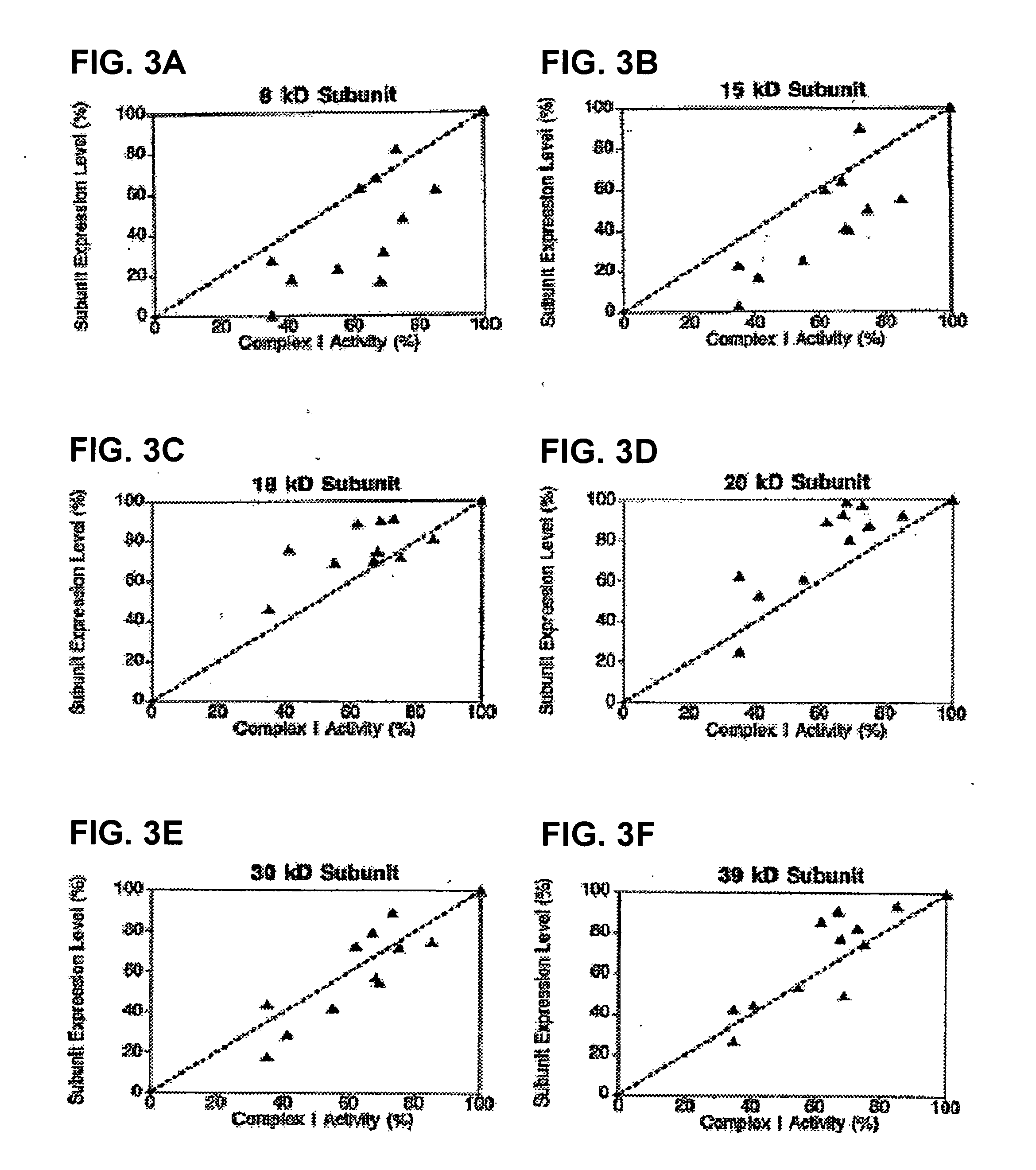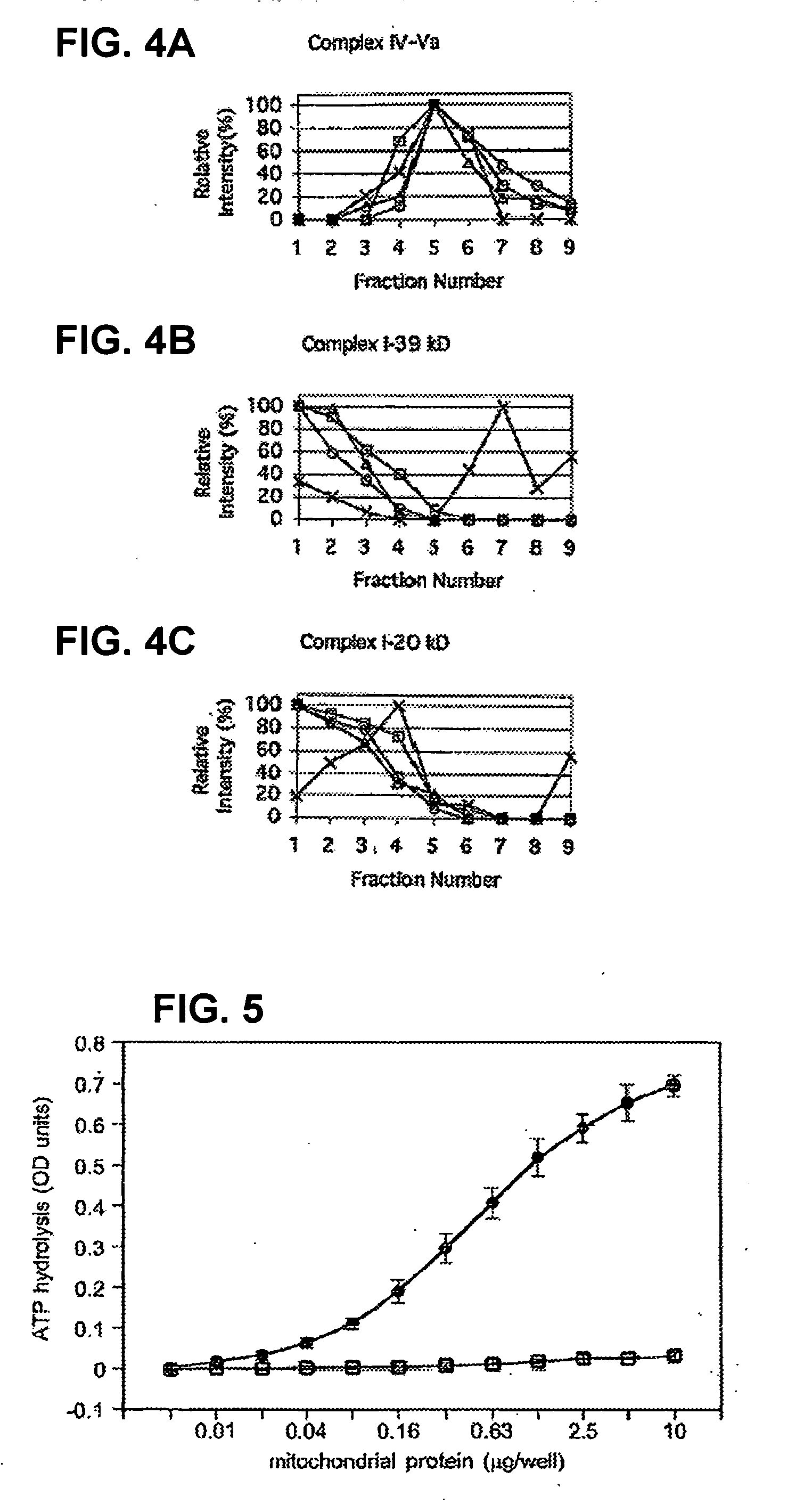Immunocapture of mitochondrial protein complexes
a technology of mitochondrial protein and complex, which is applied in the field of immunocapture of mitochondrial protein complex, can solve the problems of difficult diagnosis and treatment of mitochondrial defects, more oxphos system damage, and altered functioning of oxphos, so as to prevent or treat mitochondrial disorders, high-throughput screening, and the effect of high screening
- Summary
- Abstract
- Description
- Claims
- Application Information
AI Technical Summary
Benefits of technology
Problems solved by technology
Method used
Image
Examples
example 1
Proteomic Analysis of Complex I is Useful in the Detection of Human Complex I Defects
[0347] Complex I defects are one of the most frequent causes of mitochondrial respiratory chain disorders. This Example demonstrates that there is a correlation between OXPHOS Complex I levels and / or assembly patterns and Complex I disorders; thus, methods of detecting Complex I can facilitate the diagnosis of Complex I deficiencies.
A. Materials and Methods
[0348] 1. Purification of Complex I From Bovine Heart
[0349] Biochemically purified bovine heart Complex I as well as the flavoprotein, iron-sulfur protein, and hydrophobic protein subfractions of Complex I isolated as described previously (Hatefi, Meth. Enzymol., 53: 11-14, 1978; Galante et al., Meth. Enzymol., 53: 15-21, 1978; Galante et al., Arch. Biochem. Biophys., 192: 559-568, 1979) were kindly supplied by Dr. Youssef Hatefi (The Scripps Institute, La Jolla, Calif.). Immunopurified bovine heart Complex I was generated by solubilizing bov...
example 2
Purification and Characterization of Functionally Active Human F1 / F0 ATPase by Immunocapture
[0404] This Example demonstrates that human mitochondrial F1 / F0 ATP synthase (also known as F1 / F0 ATPase or Complex V) can be isolated in one-step immunological approach, which uses a monoclonal antibody specific for F1. The immunocaptured Complex V displayed ATP hydrolysis activity that was fully oligomycin and IF1 sensitive. The disclosed ATP hydrolysis assay of Complex V can be carried out with as little as 10 ng of heart mitochondria / well and as few as 3×104 cultured fibroblast cells / well. IF1 was co-isolated with F1 / F0 ATPase when the immunocapture procedure was carried out at pH 6.5 but was absent when the ATP synthase was isolated at pH 8.0. The system described in this Example can be used, for example, to screen patient-derived samples for alterations in the amount and / or functionality of the F1 / F0 ATPase and / or IF1.
A. Material and Methods
[0405] 1. Monoclonal Antibodies.
[0406] Mo...
example 3
Microscale Immunocapture Assays
[0449] This Example describes methods for simplifying quantitation of target proteins and for facilitating the simultaneous processing of large sample numbers probed with large numbers of capture antibodies; in particular, by labeling target proteins with fluorescent dyes and formatting the capture mAbs in a microarray. This method also has the advantage of permitting detection of target proteins that do not have enzymatic activity.
[0450] Commercially available protein reactive fluorescent dyes (amine-reactive succinimidyl esters and thiol-reactive maleimides) were used to label solubilized human and bovine heart mitochondrial proteins. After labeling the mitochondrial proteins with fluorescent dye, unreacted dye was removed to prevent the dye from subsequently reacting directly with capture antibodies and / or blocking agents which would give unacceptable background fluorescence. Unreacted dye may be removed by, for example, quenching, gel filtration,...
PUM
| Property | Measurement | Unit |
|---|---|---|
| pH | aaaaa | aaaaa |
| pH | aaaaa | aaaaa |
| pH | aaaaa | aaaaa |
Abstract
Description
Claims
Application Information
 Login to View More
Login to View More - R&D
- Intellectual Property
- Life Sciences
- Materials
- Tech Scout
- Unparalleled Data Quality
- Higher Quality Content
- 60% Fewer Hallucinations
Browse by: Latest US Patents, China's latest patents, Technical Efficacy Thesaurus, Application Domain, Technology Topic, Popular Technical Reports.
© 2025 PatSnap. All rights reserved.Legal|Privacy policy|Modern Slavery Act Transparency Statement|Sitemap|About US| Contact US: help@patsnap.com



